There are many intriguing historical figures, but just how much do we know about them? The images we have of them mostly come from sculptures, portraits, and paintings. However, it is hard to tell how accurate they are. Luckily, modern technology has made it possible to find out exactly what they looked like!

Get Ready To Be Shocked By What These Historical Figures Actually Looked Like
King Tut
King Tutankhamun was the Egyptian ruler from 1332 to 1323 BC. He was only in power for a decade. In 1922, his tomb was found by Howard Carter. Before then, it had been sealed for over 3,200 years! They found treasures and artifacts in his tomb. These things were added to accompany him after death.
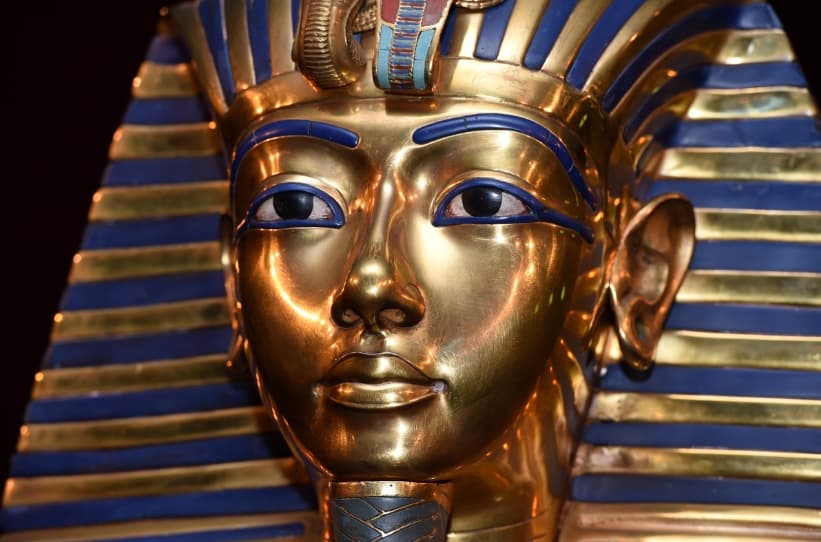
King Tut
What King Tut Really Looked Like
After they conducted DNA studies, scientists figured out just how awful his health had been. He was frail, tall, and suffered from a bone disorder, a broken leg, a club foot, and malaria! Many believe that it was due to inbreeding. It also explained why he was always depicted sitting down.
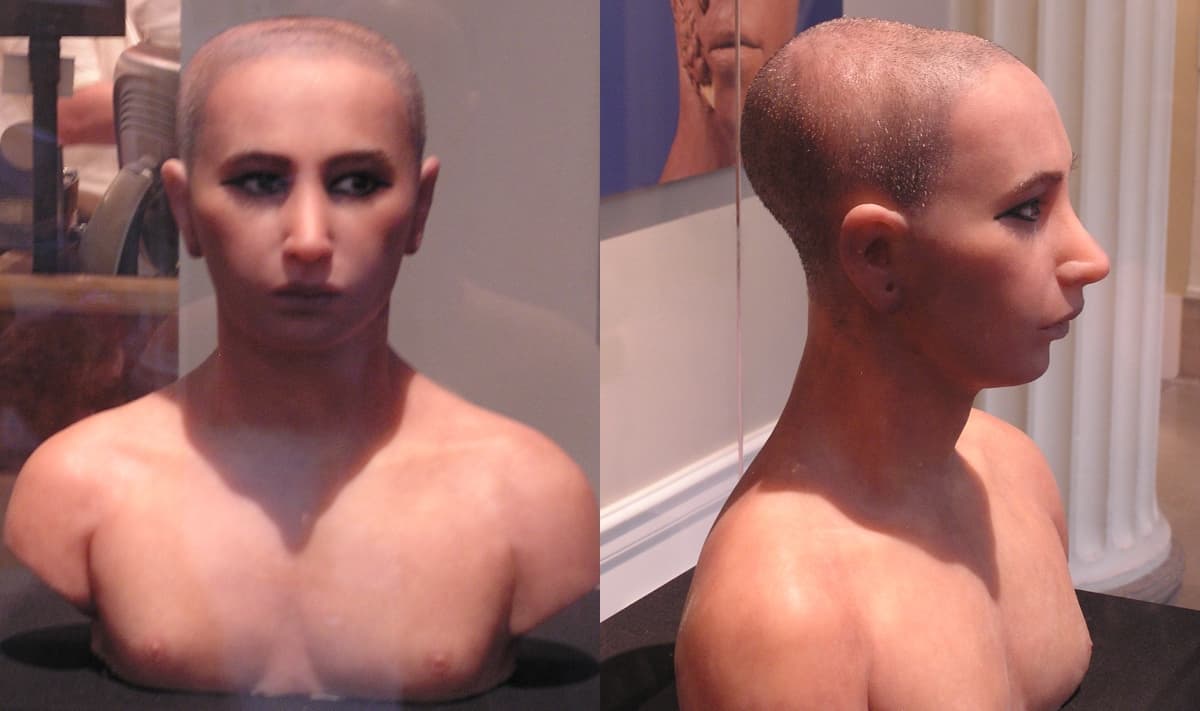
What King Tut Really Looked Like
Emperor Nero
Nero was 17 years old when he became the Roman Emperor. Five years into his reign, he had his mother killed and become more active in politics. People undermined him since he was an actor, poet, musician, and charioteer. He also raised taxes for public and private works, so he was hated by the higher classes!

Emperor Nero
What Nero Really Looked Like
Spanish artists made a realistic rendering of him with the help of busts, drawings, and descriptions. They got his physical attributes down to a tee. What did he do during a fire in Rome in 64 A.D? He got dressed, headed to the roof, and sang. Before his execution, he said, “What an artist dies in me!”

What Nero Really Looked Like
Nefertiti
A limestone bust of the Great Royal of Akhenaten was found covered in stucco. It is believed to be created by Thutmose of Amarna back in 1345 B.C. They discovered it in his workshop in 1912. Based on the sculpture, Nefertiti had a defined and beautiful face. Was this the truth or an artistic rendition?
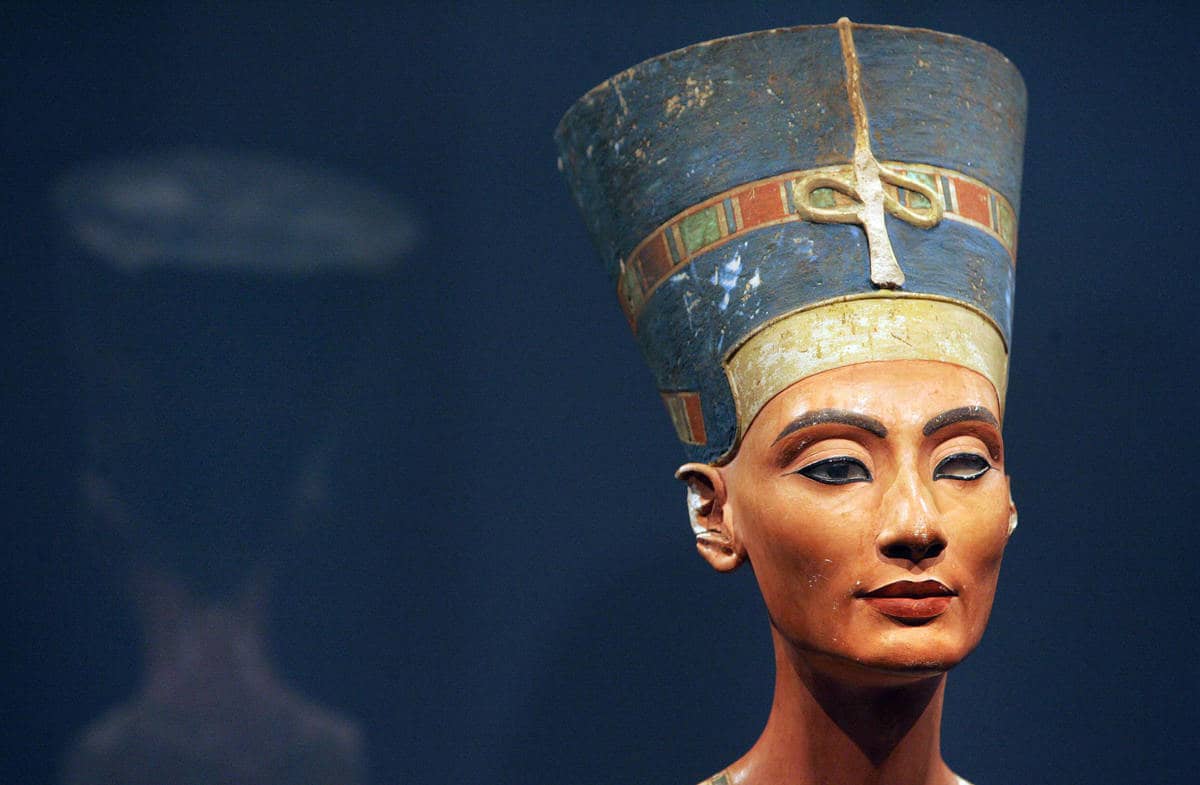
Nefertiti
What Nefertiti Really Looked Like
Using digital and 3D tools, Expedition Unknown mapped the face of “The Younger Lady.” The remains are thought to be Nefertiti’s. After scanning the face, Elisabeth Daynes recreated the face for 500 hours. She used the historical images of the queen. In the end, it seemed to confirm the theory!
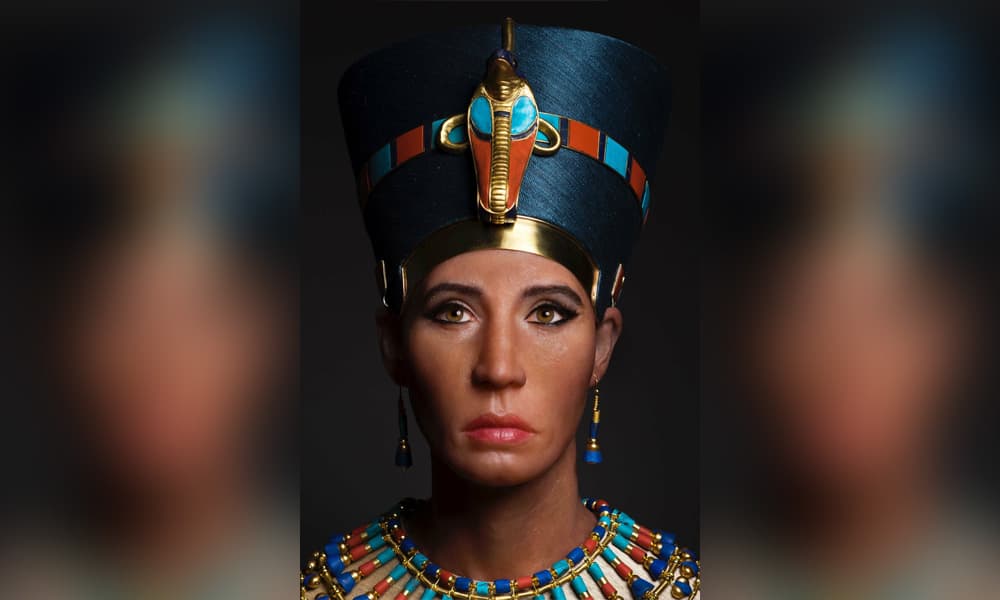
What Nefertiti Really Looked Like
Robert The Bruce
From 1306 to 1329, Robert the Bruce was the ruler of independent Scotland. He helped win Scottish independence during the guerrilla war with England. In June 1314, he won the Battle of Bannockburn. Edward II did not grant independence, which caused the Scottish nobles to write to the pope about it!

Robert The Bruce
Julius Caesar
General and politician Julius Caesar helped the expansion of the Roman Empire. He crossed the Rhine River as well as the English Channel during the invasion of Britain. Under arms, he reentered Rome via Gaul, which sparked a civil war. Luckily, there were many sculptures of him that helped recreate his face.

Julius Caesar
What Julius Caesar Really Looked Like
This bust of Caesar is in the National Museum of Antiquities in Leiden. With the use of 3D tech, they scanned a portrait of him on which they based the 3D reconstruction. After winning the civil war, Caesar became a dictator and started reforms. He even gave citizenship to people in the outermost parts of his empire. However, the Senate did not approve of such changes and murdered him in 44 B.C.

What Julius Caesar Really Looked Like
Cleopatra
Cleopatra ruled over Egypt for almost 3 decades. At the age of 18, she started her reign with her younger brother, Ptolemy XIII. However, she got ran out of the country by his advisers in 49 B.C. She was reinstated with Ptolemy XIV, her other brother, with the help of Caesar. She had a child called Ptolemy Caesar, who is generally thought to be her child with the Roman dictator. Sadly, Ptolemy XIV died soon after Julius Caesar was assassinated. In the end, Cleopatra continued ruling Egypt with her son.

Cleopatra
What Cleopatra Really Looked Like
Cleopatra was a highly-educated ruler who knew several languages. It was part of the reason she went on to be the dominant ruler and co-regent. She was also good at seduction and formed alliances with her fellow leaders. 3D artists used sculptures and portraits to recreate her face. Many expected her to look just like Elizabeth Taylor, so her masculine attributes and prominent nose might come as a surprise.
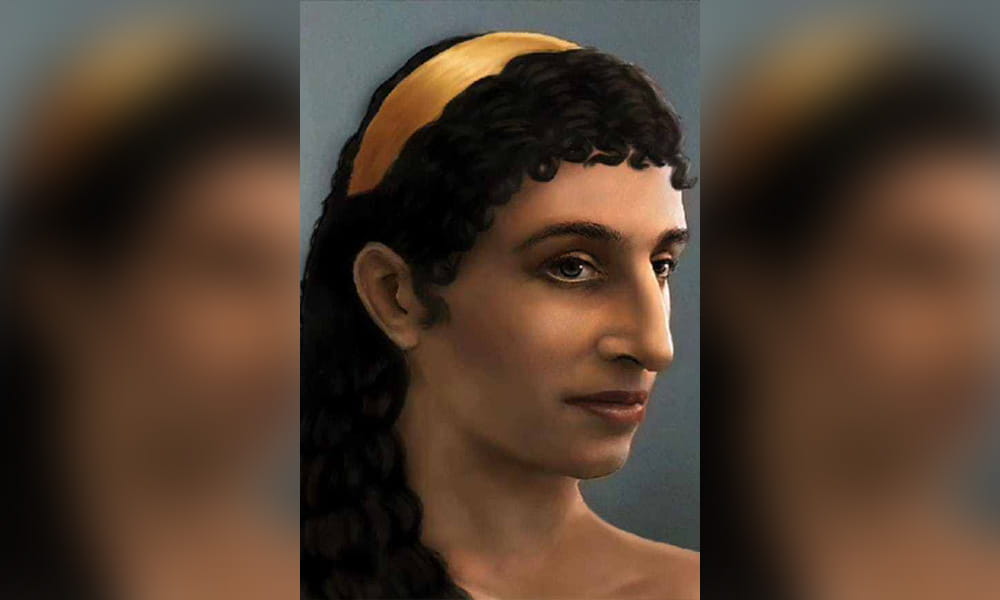
What Cleopatra Really Looked Like
Queen Elizabeth I
Queen Elizabeth I ruled England and Ireland from 1558 until 1603. Born to Anne Boleyn and King Henry VIII, she was declared illegitimate when they got annulled. Years later, she ascended the throne. There were a lot of paintings that depicted her face. Mat Collishaw decided to dig deeper in 2018, however.

Queen Elizabeth I
What Queen Elizabeth I Really Looked Like
He made a hyper-realistic animatronic mask with eyes and a mouth that moved! A mirror is installed in it, and it can be found in the Queen’s House. Across it is the so-called Armada portrait that showed her in her prime although it was made when she was 55 years old. It is actually a pretty accurate depiction!

What Queen Elizabeth I Really Looked Like
William Shakespeare
William Shakespeare is one of the most important figures in literature. Many scholars and historians agree that his Martin Droeshout engraving accurately depicts him. He still sported facial hair even though he had been balding. Hildegard Hammerschmidt-Hummel discovered his death mask in London in 1975. Back then, they made these masks by pouring wax or plaster on the face of the deceased.

William Shakespeare
What William Shakespeare Really Looked Like
Dr. Caroline Wilkinson relied on the death mask for the facial attributes in her rendering back in 2010. With the help of 3D imaging, she made this rendering of the playwright. People think it looks like the other depictions of the bard. He passed away at the age of 52 on the 23rd of April 1616.

What William Shakespeare Really Looked Like
George Washington
George Washington was the first president of the United States. His term lasted from 1789 to 1797. He got elected during the 1787 Constitutional Convention after the War for Independence. The Founding Father is an important historical figure, so his face is everywhere! But did he actually look like that?

George Washington
What George Washington Really Looked Like
Researchers used his portraits to make a computer-generated rendering of him. Based on it, paintings of Washington seem authentic. The rendering is realistic enough that it captured his five o’clock shadow and full head of hair. He was 67 years old when he passed away on the 14th of December 1799.

What George Washington Really Looked Like
Mary, Queen of Scots
Mary Stuart, better known as Mary, Queen of Scots, ruled from 1542 to 1567. Her reign started when she was just 6 days old since her father died soon after her birth. She grew up in the French court and only returned to Scotland in 1559. Do you think it was really what she looked like?

Mary, Queen of Scots
What The Queen Of Scots Really Looked Like
Dr. Caroline Wilkinson used drawings and paintings to make this 3D rendering of the queen. Aside from this, she relied on biographical information to make it truer to like. It might look pretty similar to classic paintings, but there are key differences. Her nose has remained consistent in these depictions, however.

What The Queen Of Scots Really Looked Like
Richard III
King Richard III only ruled England for 2 years. However, his reputation has not been so good. He was branded a tyrant by Shakespeare, and he was replaced by the Tudors. He led an attack against the Tudor army during the Battle of Bosworth Field, although it was a rather easy defeat for his crew.

Richard III
What Richard III Really Looked Like
In 2012, they were able to recreate a photo of Richard III. They found his body, thought to be lost, in an underground parking lot back in 2012. Researchers from Dundee University used this image of him to make a rendering of him. The researchers relied on historical records since he has no realistic paintings.

What Richard III Really Looked Like
Meritamun
Meritamun is a word that translates to “beloved of the god Amun.” Researchers from the University of Melbourne introduced it after they found her skull in the archives. It remains a mystery how her remains got there. She was a Great Royal Wife of Ramesses and was buried in the Valley of the Queens in Egypt.

Meritamun
What Meritamun Really Looked Like
The only thing they had on her was the skull but they found out more things about her. She had been 18 to 25 years old at the time of her death, but the cause is a mystery. Her tooth decay made them think that she liked sweets. This sounds right since Alexander III introduced sweets to Egypt around that time!

What Meritamun Really Looked Like
Jesus Christ
Come on, how can you possibly tell us that you do not know this guy. Jesus Christ is the biblical figure believed to have risen from the dead, made the blind see, converted water to wine, and walked on water. In the end, they crucified him for the greater good. Did the depictions get his attributes right?

Jesus Christ
What The Real Jesus Christ Might Have Looked Like
The Bible did not describe him, but evidence has shown that he did not look like most modern depictions. With the use of forensic anthropology, British and Israeli archaeologists were able to make this rendering of him. As you can see, the common pictures of him do not match his appearance!

What The Real Jesus Christ Might Have Looked Like
The Lord Of Sipan
The Lord of Sipan was discovered among the Moche mummies. Archaeologists working in Peru found the remains in 1987. It was a huge deal since they found so many bodies! This person had been buried with many treasures. Let us take a look at how they managed to bring him to life once more.

The Lord Of Sipan
What The Lord Of Sipan Really Looked Like
The team faced a challenge because the pressure of the sediment caused the skull to break during the excavation. They were still able to reconstruct the skull by using photogrammetry on the 96 fragments. This image was made by the Brazilian Team of Forensic Anthropology and Forensic Odontology.

What The Lord Of Sipan Really Looked Like
Saint Anthony
Born in 1195, Saint Anthony died at just 36 years old. However, he was famous when he was alive because he could reportedly heal the sick. He was canonized quickly after his death. He was the second-fastest one to be canonized! Just one year after he passed away, he was declared the saint of lost things.

Saint Anthony
What Saint Anthony Really Looked Like
It was said that children cried and bells rang out by themselves after his death. His body was exhumed 3 decades after that, but researchers only retrieved his tongue and jawbone. This project had been a collaboration between the University of St. Anthony of Padua and the University of Sao Paolo.

What Saint Anthony Really Looked Like
King Henry IV
King Henry IV is also known as “Good King Henry” and “Henry the Great.” At the age of 19, he was crowned the King of Navarre. Two months later, he married. Protestants entered the city to celebrate, but it turned into the “St. Bartholomew’s Day Massacre.” He almost died and went to the French court.

King Henry IV
What King Henry IV Really Looked Like
It is believed that there had been 13 attempts to murder him. He was chosen for the project because the researchers liked his religious tolerance. Philippe Charlier and Philippe Froesch brought him back to life. The last attempt on his life proved to be successful. A Catholic man stabbed him in 1610.

What King Henry IV Really Looked Like
Johann Sebastian Bach
Born in 1685, Johann Sebastian Bach went on to be one of the most famous musicians ever. The composer had been a musical prodigy. He started out on the organ, but it was his church music compositions that made him famous. Very few people have managed to achieve the same things he did.

Johann Sebastian Bach
What Bach Really Looked Like
Dr. Caroline Wilkinson used his skull cast to recreate his likeness. Bach was buried in an unmarked grave for some time. They only found the body a century and a half later when the church he was buried in was renovated. They saw a skull they thought was his. The image below was the result of the project.

What Bach Really Looked Like
Simón Bolívar
Simon Bolivar is a military leader from Venezuela who was integral to the revolution against Spain. He was born into a wealthy family and studied in Spain. While in Europe, he became part of the resistance. When Spain was invaded by France, he was dubbed “El Libertador.” He passed away from tuberculosis.

Simón Bolívar
What Simón Bolívar Really Looked Like
They were not lying when they told us that looks can be deceiving. This might seem like a real photo, but it is nothing more than a recreation. The forensic imagery team, with the help of the Venezuelan government, perused historical documents and spent a year on them. That was how they made this!

What Simón Bolívar Really Looked Like
Nicolaus Copernicus
There was a time when Earth was thought to be the center of the universe. Nicolaus Copernicus was the man who proved everyone wrong. Born in Poland in 1473, he made the sun-centered model we all know. Over the course of his life, he traveled around Europe. Let us see what he looked like back then.

Nicolaus Copernicus
What Nicolaus Copernicus Really Looked Like
Old depictions of the scientist showed him as a gaunt and hollowed man. They used modern technology to make an accurate depiction of him. In the end, he still looked miserable. It’s not unusual for geniuses!

What Nicolaus Copernicus Really Looked Like
The Lady of Cao
Researchers in the El Brujo region of Peru had been studying the site for decades. In 2005, they were able to discover the Lady of Cao. She had simple clothes and thought to have died back in 400. Experts believe she was Moche and of the aristocracy thanks to the various artifacts found in her grave.

The Lady of Cao
What The Lady Of Cao Really Looked Like
Not long after they found the body, she was taken to the museum and stored in a climate-controlled room. A looking glass separates her from visitors. Even to this day, no one knows what her role in society had been. Believed to be in her late 20s at the time of her death, they think she was sacrificed.

What The Lady Of Cao Really Looked Like
St. Nicholas
St. Nikolaos of Myra had been a 4th century Christian saint. Also called St. Nicholas, he was a Turkish bishop known for his generosity and caring nature. He would leave presents in the shoes of kids left outside the house. It was how the tradition started! Can you believe that he was actually a real person?
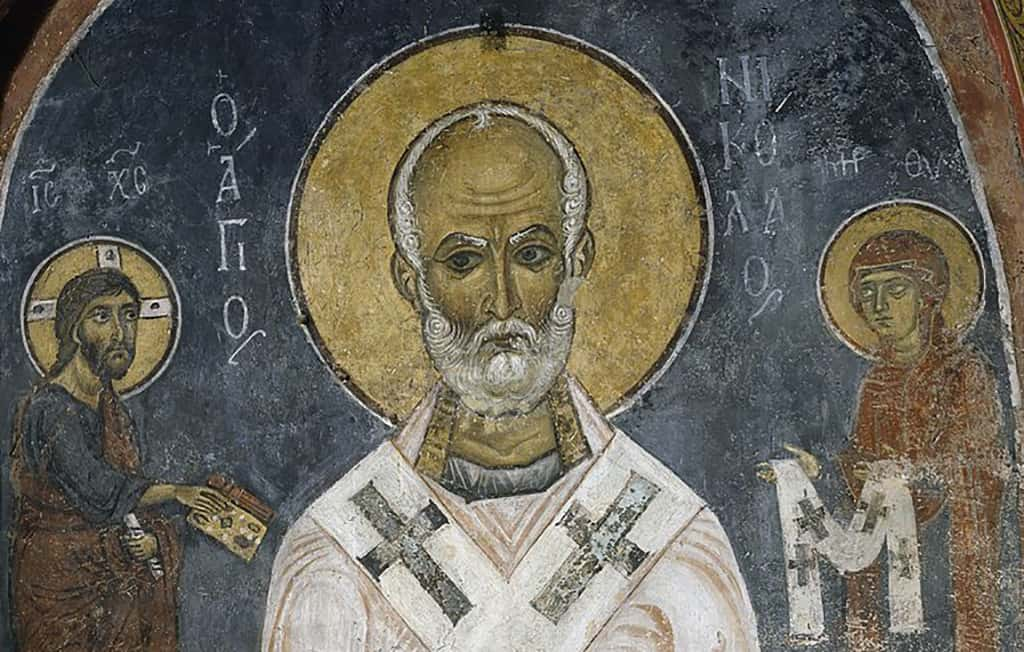
St. Nicholas
What St. Nicholas Really Looked Like
He is now called Santa Claus. However, he does not look a lot like what you might think. He was from Turkey, so he was likely darker and more Middle Eastern than photos depict him. Westerners often think that historical figures have the same features as them. Clearly, this is false.

What St. Nicholas Really Looked Like
Giovanni Battista Sidotti
Giovanni Battista Sidotti was an Apostolic missionary born in 1668. He went to Japan on a mission to spread Christianity. This was dangerous back then, so he used a samurai disguise. He got caught and then locked up until he died in 1714. A lot of people consider him to be “the last missionary.”
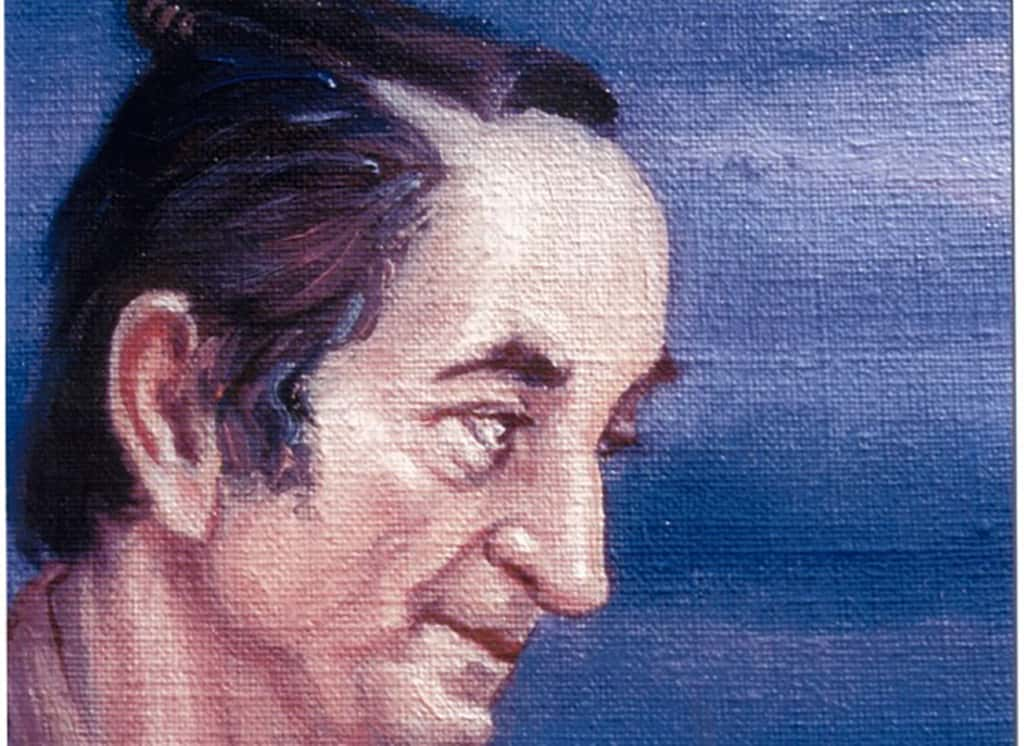
Giovanni Battista Sidotti
What Giovanni Battista Sidotti Really Looked Like
His remains were found more intact than usual. In 2014, they discovered the body through a 2 million-yen excavation. With his remains, they were able to recreate him. While damaged, the skull had been intact enough for the forensic anthropologists to carry out the project.

What Giovanni Battista Sidotti Really Looked Like
The Mycenean “Griffin Warrior”
In 2015, they found a tomb site dating back to the Bronze Age. Thought to be from 1450 BC, it had a male skeleton inside. Archaeologists uncovered 14,000 things from weapons to jewelry. There was also engraving that made them think that the man buried there had been a warrior or a priest!

The Mycenean “Griffin Warrior”
What The Mycenean “Griffin Warrior” Might Have Looked Like
They used the remains to determine that he had been 5’4”, which was tall back then. They also found combs that made them think this warrior had long hair. Anthropologists Tobias Houlton and Lynne Schepartz used the skull to create this digital rendering. He likely had close-set eyes and a strong jaw!
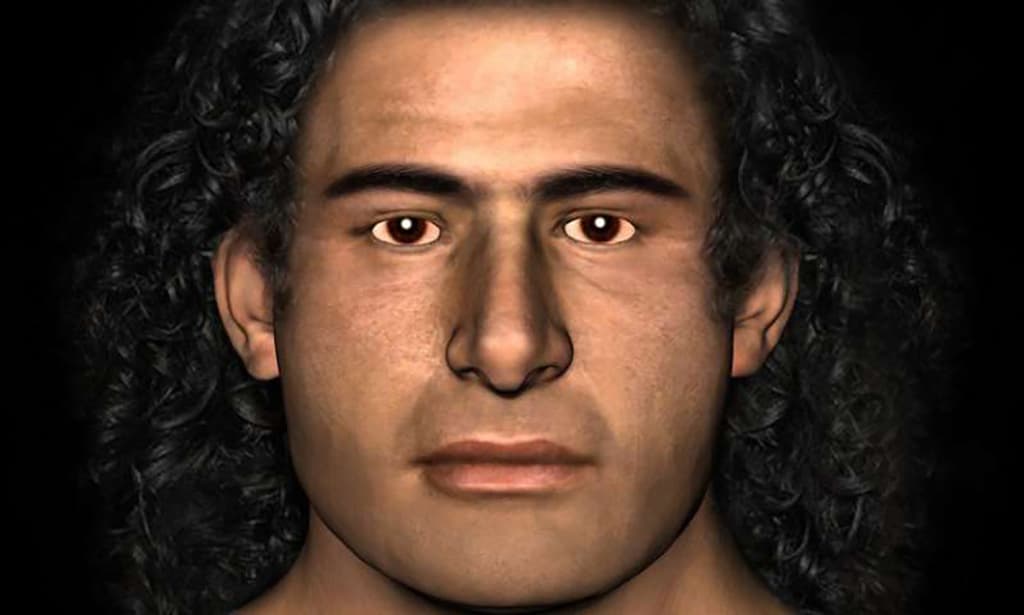
What The Mycenean “Griffin Warrior” Might Have Looked Like
Dante Alighieri
Dante Alighieri is the author of the Divine Comedy. He was one of the most notable poets in Italy during the Middle Ages. He described Hell and Heaven, with some of his descriptions becoming part of the Christian canon. On top of that, he was also a philosopher. He was 56 when he passed away in 1321.
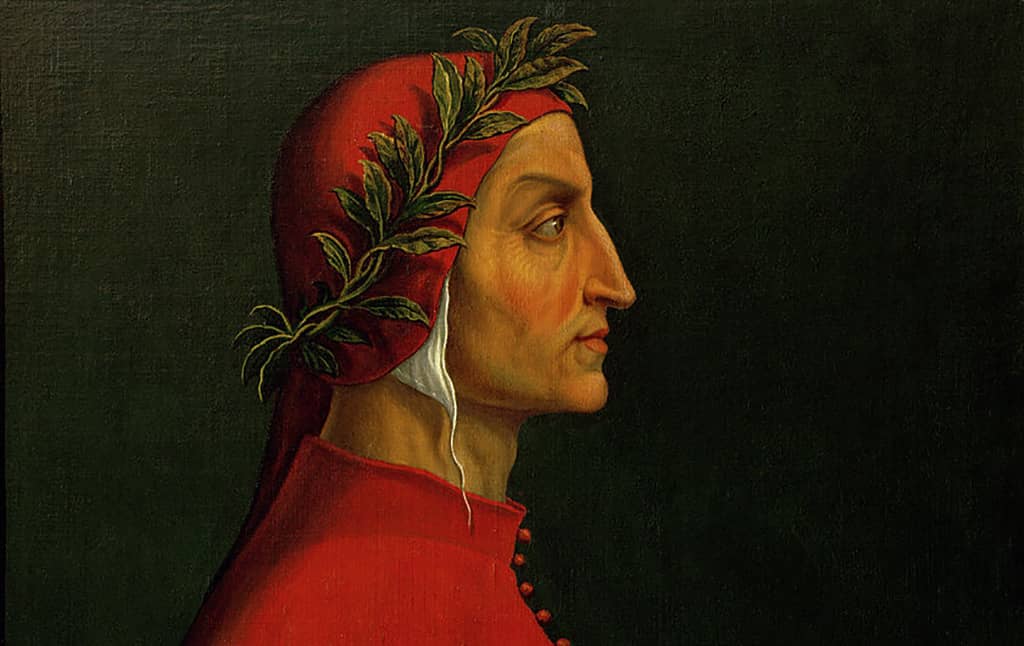
Dante Alighieri
What Dante Alighieri Really Looked Like
Many portraits of the poet exist, and they seem to have the same features. In general, he was depicted to have a Roman nose and stern face. The team used CGI to create this rendering of him. It was based on his skull measurements! The results showed him with a rounded jaw, a softer face, and bigger eyes.
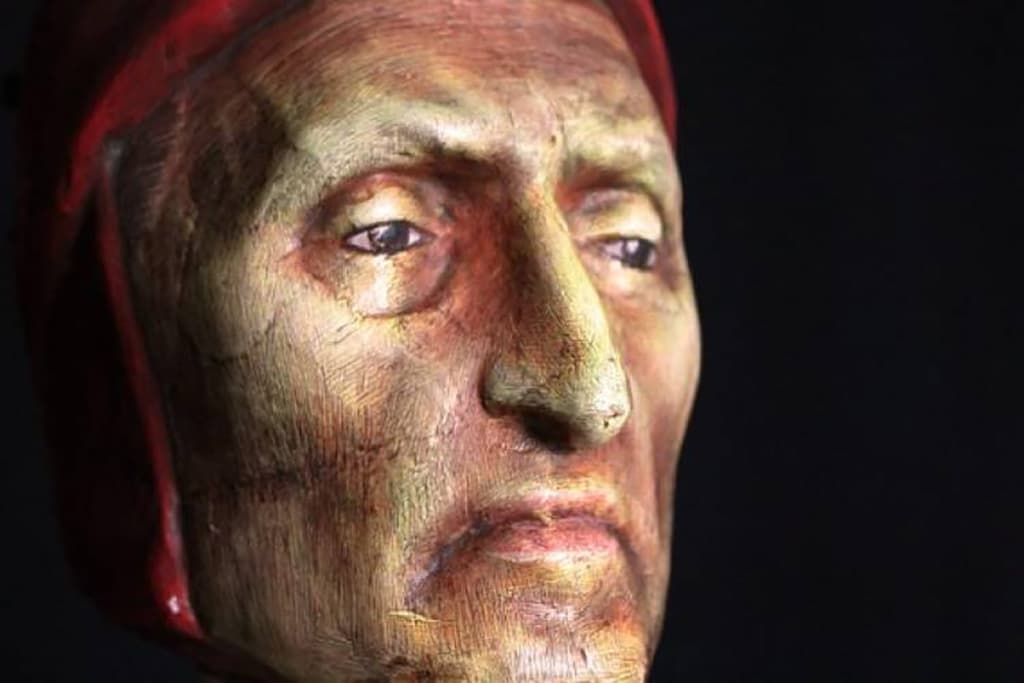
What Dante Alighieri Really Looked Like
Maximilien Robespierre
Maximilien Robespierre is an important figure in French history. He wanted the universal manhood suffrage, abolition of slavery, and religious tolerance. He was a key figure in the establishment of the First French Republic and was elected deputy of the National Convention. But what did he look like?

Maximilien Robespierre
What Maximilien Robespierre Really Looked Like
In 2013, Philippe Charlier and Philippe Foresch worked to make this rendering of the lawyer-politician. They used his death masks and artworks of him. Apparently, Madame Tussaud herself made the death masks! Of course, she used his decapitated head to make them since he was executed in July 1794.
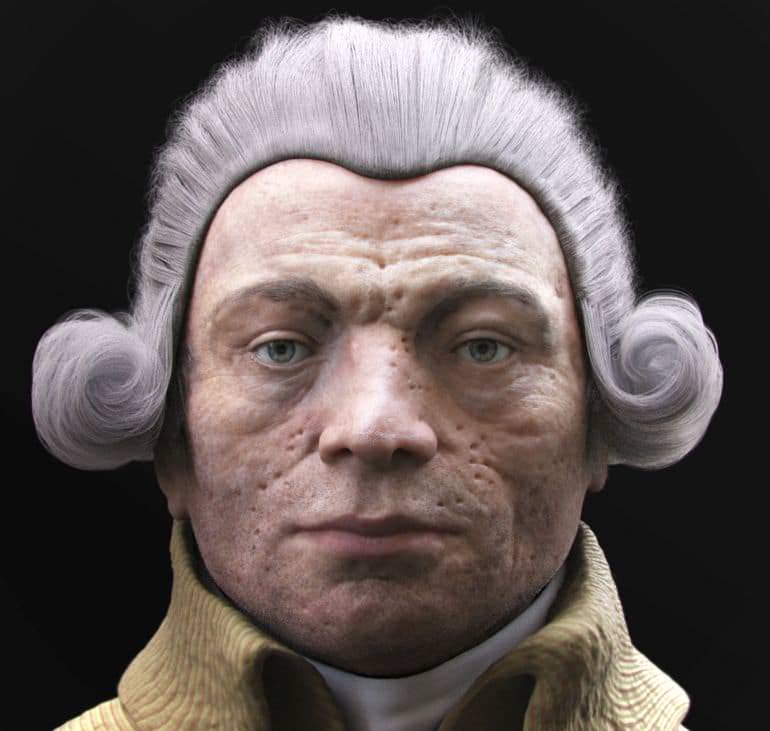
What Maximilien Robespierre Really Looked Like
Mozart
Wolfgang Amadeus Mozart was born on the 27th of January 1756 in Salzburg. He died in Vienna on the 5th of December 1791. This important classical musician was a keyboard and violin prodigy. At the age of 5, he had already been playing for royalty! He was able to compose over 600 pieces over his lifetime.

Mozart
What Mozart Really Looked Like
He suffered an untimely death. Pierre-Francois Puech reconstructed his face based on his preserved head. Mozart had a rather distinctive bone rim protection, which lent his face a more feminine look. Aside from that, he had white hair, a short head, blue eyes, and high cheekbones!

What Mozart Really Looked Like
Ramses II
Ramesses the Great or Ramses II was born in 1303 BC. The 3rd pharaoh of the 19th Egyptian Dynasty, he ruled from 1279 until 1213 BC. He had 48 to 50 sons as well as 40 to 53 daughters! Whoa. He died at the age of 90. Many consider him to be the greatest New Kingdom pharaoh!

Ramses II
What Ramses II Really Looked Like
He was buried in the Valley of the Kings. They later moved his body to a royal cache. Priests were worried about looting, which is why they rewrapped and relocated his remains to the tomb of Queen Ahmose Inhapy. They later moved it to that of Pinedjem II. They made this discovery back in 1881.

What Ramses II Really Looked Like
Tiberius
Tiberius was born on the 16th of November 42 BC and died on the 16th of March 37 AD. He reigned from 14 to 37 AD. The son of Livia Drusilla and Tiberius Claudius Nero, he went on to become the second Roman emperor. “In a free state there should be freedom of speech and thought,” he once said.

Tiberius
What Tiberius Really Looked Like
He passed away when he was 78 years old, but no one can confirm the cause of his death. Some said he was smothered by his sheets, but some believe Caligula murdered him. You can visit the Tiberius Palace in Rome. The tourist spot is located on the Palatine Hill, and we highly recommend checking it out!

What Tiberius Really Looked Like
Marcus Agrippa
General, statesman, consul, and architect. Marcus Agrippa was all of these things! He was born in 63 BC and became Augustus’ best friend and right-hand man. Many buildings in Rome had been designed by him. He helped bring Rome to victory during the Battle of Actium against Mark Antony and Cleopatra.

Marcus Agrippa
What Marcus Agrippa Really Looked Like
In 12 BC, he died in Campania at the age of 51. Augustus held a big funeral and a long mourning period for him. The emperor also looked after his children after he died. While Marcus Agrippa already prepared a tomb for himself, he had been placed in Augustus’ mausoleum instead.

What Marcus Agrippa Really Looked Like
Huarmey Queen
The Huarmey Queen must have been important in the Wari culture. They lived on the coasts by the Andes Mountains and the south-central Andes areas from 700 to 1000 AD. Her remains were found in El Castillo de Huarmey in the Ancash region. She had been buried there together with 57 other nobles!

Huarmey Queen
What The Huarmey Queen Really Looked Like
In an attempt to make her look more realistic, they gave her a physical form. The discovery of this mausoleum had been so fascinating since they found her and the other noblewomen sitting in rows of fives. They also saw jewelry, bowls, and many other artifacts buried in the tomb with her.

What The Huarmey Queen Really Looked Like
Saint Zdislava Berka
Saint Zdislaya Berka is also known as Havel of Markvartice. A Czech saint, she was married to the Duke of Lemberk. This strict but generous woman founded a convent. She lived from 1220 until 1252. She was canonized on May 21, 1995.

Saint Zdislava Berka
What Saint Zdislava Berka Really Looked Like
In 2018, they made a digital forensic reconstruction of her. Doesn’t it look incredibly real? They were able to create such a realistic portrayal with the use of her remains, particularly her cheekbones and jaw structure.

What Saint Zdislava Berka Really Looked Like
Trajan
The Roman emperor Trajan was born in September 53 and ruled from 98 until his death in 117. The Roman Senate called him the optimus princeps, which means “the best ruler.” He is known to be a great soldier-emperor and led the greatest Roman military expansion.

Trajan
What Trajan Really Looked Like
The team used a marble bust of him for the reconstruction. Archaeologists think that it was made in 113 AD. The quality of the piece made them think the artist saw him in person. The statue had been split into 356 fragments during its discovery. The theory is that it broke because of an earthquake.

What Trajan Really Looked Like
‘Ava’
Achavanich is a Northern Scotland site. The horseshoe-like site was where they discovered the remains of someone they referred to as ‘Ava.’ At the time of her death, she must have been 18 to 22 years old. It is incredible to think that she must have been alive over 3,700 years ago.

‘Ava’
What ‘Ava’ Really Looked Like
Maya Hoole and Hew Morrison teamed up for the ‘Achavanich Beaker Burial Project.’ They reconstructed the face of the woman they found. The project allowed them to learn more about her and the Bronze age. With the use of the DNA, they were able to bring her back to life!

What ‘Ava’ Really Looked Like
Otzi The Iceman
Otzi The Iceman roamed Earth anywhere from 3400 to 3100 BCE. The well-preserved mummy also goes by the Man from Hauslabjoch, the Similaun Man, the Tyrolean Iceman, and the Hauslabjoch mummy. He was discovered in the Ötztal Alps back in September 1991. He is the oldest known natural mummy in Europe! He is now in the South Tyrol Museum of Archaeology.

Otzi The Iceman
What Otzi The Iceman Really Looked Like
The mummy gave everyone a chance to learn more about Europe in the Copper Age. The body had been preserved well since it had been in the ice for around 5,300 years. This allowed them to make a naturalistic reconstruction. This would have been impossible if his body had deteriorated!

What Otzi The Iceman Really Looked Like
Owain Glyndwr
Owain Glyndwr did his best to stop the English rule of Wales during the late Middle Ages. Born in 1359, this Welsh rebel ruled from 1404 until his death in 1415. He was depicted as a wild king in Shakespeare’s Henry IV Part 1.

Owain Glyndwr
What Owain Glyndwr Really Looked Like
‘The Face of Glyndwr’ showed what it was like to reconstruct his face. They used CGI and 3D tech to bring him back to life. The team even said, “We have come as close as anyone ever will to finding out what the Welsh rebel actually looked like.”

What Owain Glyndwr Really Looked Like
Emily Dickinson
Emily Dickinson is a famous American poet. She was born in Massachusetts back in 1830 and attended an all-girls school. Her childhood had been an isolated one, and the same went for her adulthood. She passed away in 1886. Four years later, her works were given the recognition they deserve.

Emily Dickinson
What Emily Dickinson Really Looked Like
It is difficult to imagine what she looked like, so modern technology is a blessing. She was beautiful just like her words are. She might have lived over a century ago, but we can now see what she looked like!

What Emily Dickinson Really Looked Like
Marie Antoinette
Marie Antoinette was born an Austrian Princess in 1755. She ended up becoming the last person to be the Queen of France since it was during her husband’s reign that the French Revolution took place. She had been a pawn in the politics of Europe. She was known for her decadent tendencies.

Marie Antoinette
What Marie Antoinette Really Looked Like
With the use of technology, we can now see what her physical attributes were like. She wore many gowns back then. We bet she would look just like a modern woman if she wore a business-casual outfit!

What Marie Antoinette Really Looked Like
Annie Oakley
American exhibition shooter Annie Oakley was born in 1860 and died in 1926. The sharpshooter was 15 when she beat Frank E. Butler, who later became her husband. They ended up joining the Buffalo Bill’s Wild West show. She once said, “I ain’t afraid to love a man, I ain’t afraid to shoot him either.”

Annie Oakley
What Annie Oakley Really Looked Like
Her photos showed everyone that she was one stunning lady! Reconstructive artists gave us an even better idea of her appearance. Don’t you think that she would look right at home in the 21st century?

What Annie Oakley Really Looked Like
What A 500 Year Old Dubliner Really Looked Like
In 2014, the remains of a 500-year-old man had been unearthed. He was accompanied by four other people. There was evidence of malnutrition and heavy manual labor. Experts believe that these were indicators of low socioeconomic status. They figured out what this man looked like with the help of his skull.

What A 500 Year Old Dubliner Really Looked Like
Jane Of Jamestown
Jane was only 14 years old at the time of her death. It seemed like her co-settlers in Jamestown ate her! They discovered her skull and leg bones in a cellar in 2012. She had been alive during the 17th century. Times were rough back then, and people had to resort to such measures for survival.

Jane Of Jamestown
What Jane Of Jamestown Really Looked Like
Dr. Douglas Owsley is a forensic anthropologist at the National Museum of Natural History at the Smithsonian Institution. He discovered the marks and cuts inflicted upon her body in an attempt to get her bone tissue and brain. This made sense since the 1609 winter was hard for the folks at Jamestown.

What Jane Of Jamestown Really Looked Like
Mary Rose Archer
In 1545, the Mary Rose warship sank while it was battling the French. It was part of the navy during the rule of King Henry VIII. They only found it almost 500 years after its sinking! They discovered the remains of many crew members. One of the people on the ship had been an archer.

Mary Rose Archer
What A Mary Rose Archer Really Looked Like
Algae and marine organisms gave them a hard time during the analysis. Even so, they learned a lot of things about this man. He had been 6 feet tall and used a longbow. This was what he looked like.

What A Mary Rose Archer Really Looked Like
Robert Burns
Scottish poet and lyricist Robert Burns was born in 1759 and died in 1796. He was 37 at the time of his death. He worked on “Auld Lang Syne” and “The Battle of Sherramuir.” His skull was used to bring him back to life!

Robert Burns
What Robert Burns Really Looked Like
He is a celebrated figure. After all, he is the national poet of Scotland. Researchers worked hard to see what he looked like back in the day. This looks like a very accurate portrayal of him, if you ask us!

What Robert Burns Really Looked Like
What A Medieval Maiden From Edinburgh Really Looked Like
Experts found over 400 bodies at the burial grounds of the South Leith Parish Church. The remains came from the Middle Ages. They were excavated in 2009 for a new train system. They found a woman in the communal grave. Her cause of death is believed to have been the plague or an infectious disease.

What A Medieval Maiden From Edinburgh Really Looked Like
What A Beachy Head Lady Really Looked Like
The Beachy Head Lady was thought to have been European Roman alive in the 3rd century. They later learned that she was sub-Saharan African instead. Joe Seaman said, “Whether that means that she’s the first generation, we don’t know. She could possibly have been born in Africa and brought over here at a very young age, but it’s just as likely that she was born here.”

What A Beachy Head Lady Really Looked Like
What Robert The Bruce Really Looked Like
While he does not appear in contemporary art, the University of Glasgow obtained the skull of Robert the Bruce. Before, artists only based his statues and portraits on word of mouth and imagination. Face Lab technology, legal artifacts, and archaeological data were used for this reconstruction. Pope John XXII recognized Robert I as the king of Scotland, although he ended up dying five years later.

What Robert The Bruce Really Looked Like
Early Neolithic Stonehenge Man
This well-kept skeleton was discovered in a tomb in the 1860s which helped provide a rare example of the anatomy of Neolithic people. He is known as ‘Stonehenge Man’. Additionally, with the assistance of skeletal analysis, the man, who is believed to have been about 40 years old, can be dated back roughly 5,500 years. He lived around about 500 years before the first Stonehenge monument was built.

Early Neolithic Stonehenge Man
Context 958
This Medieval Man lived around 700 years ago. With the help of modern technology and facial reconstruction technology, this image was brought to life. This then allowed researchers to analyze things such as his teeth and bone structure. Context 958 is currently part of research that is being conducted at Cambridge University. Researchers aim to learn more about the Medieval Times. In addition, the study is looking to understand how these people lived and died.

Arish
Young Man of Byrsa is known as the Phoenician man who lived in Carthage, which is now known as Tunisia. He is believed to live more than 2500 years ago and that he was between 19 and 24 years old. With the help of modern technology and investigation techniques, scientists were able to reconstruct his appearance as if this young man were still alive today.

Arish
John De Strivelyn
John de Strivelyn was born in August 1378. It is presumed that he also had two other names, John Stirling or Johannes de Strivelyn. Either way, he was a medieval Scottish knight in English service. His remains were later found at Stirling Castle underneath a long-lost 12-century royal chapel. This image below was developed using advanced digital scanning combined with replication. Then, a medical artist painted the final result. Impressive, right?

John De Strivelyn
Whitehawk Woman
Petite and skinny, Whitehawk Woman is assumed to have lived about 5,600 years ago and died before the age of 25. Furthermore, researchers believe that she passed away during childbirth as the remains of the fetus were found in her pelvic area. In 1933, she was excavated from one of Britain’s earliest Neolithic sites which once were the Whitehawk Enclosure.

Whitehawk Woman
Ditchling Road Man
This may seem somewhat bizarre, but this man was actually named after the road-widening project that brought about the discovery of his remains in 1921. It seems as though, he was one of the first farmers from 2,400 B.C. that arrived from Central Europe. His remains showed evidence that he was truly malnourished during his life, which is the reason that his growth was stunted. Further research showed that he died between the ages of 25 and 35. He was buried with a Beaker vessel and snail shells.

Ditchling Road Man
Slonk Hill Man
Slonk Hill Man lived more or less 2400 years ago during the Iron Age. He was identified in 1968 but his death is still unknown today. What’s fascinating is the fact that he was actually buried in a way that was typical to Britain’s Iron Age; in a semi-crouched position. Strong in caliber, Slonk Hill Man was buried above mollusks and alongside some weapons, meaning he was more than likely a warrior. There is a lot of ambiguity surrounding his life and death which scientists are still trying to solve.

Patcham Woman
Patcham Woman lived in 210 AD and is also believed to have been a resident of Roman Britain. Her remains were buried in a pit, but there was something quite odd about her burial. Patcham Woman was actually nailed into her grave to stop her from rising from the dead. Following further investigation, researchers found that she suffered from stress, disease, and demanding physical life. As a matter of fact, it is also presumed that her burial site might just be a 1,700-year-old crime scene.

Patcham Woman
Stafford Road Man
The discovery of Stafford Road Man shows the first wave of Saxons who traveled to Britain once the Roman Empire collapsed. His body was found near a spear and a knife, which is the reason why it was believed that he lived an active and lengthy life. Stafford Road Man died at 45 years old. He had arthritis as well as dental abscess’ which were more than likely the cause of his death as the infection eventually spread to his brain.

Stafford Road Man
Neanderthal Woman
Neanderthals are an extinct species or subspecies of archaic humans who once lived in Eurasia until about 40,000 years ago. The woman below was part of these primates and marked the movement between continental Europe and the British Islands. It is surmised that these people most likely became extinct due to absorption into the modern human genome, great climatic change, disease, or a collection of these factors. Evidence has also shown that both Neanderthals and modern people lived in Brighton roughly 40,000 years ago.

Neanderthal Woman
Early Modern Man
This man is more commonly known as ‘Early Modern Man’. The research that has been conducted on him has further proved the theory of modern humans and neanderthals living together 40,000 years ago. However, a possible overlap may have also occurred during this time. Early Modern Man’s remains were discovered in Europe along with various tools made by modern humans further prove this theory.

Early Modern Man
Kennewick Man
Kennewick Man was discovered on a riverbank of the Columbia River in Kennewick, Washington. It is also assumed that he was one of the most complete skeletons ever found. After his skeleton was studied for decades, in 2015, it was found that he had the most similar DNA to Native Americans. His remains were then returned for reburial as the Umatilla people and other tribes demanded this. What’s remarkable is the fact that he actually became part of a 9-year court case between scientists and tribal people.

Kennewick Man
Naia
Naia is one of the first Americans, who tragically died tragically by falling in an underwater cave in Mexico. The cave then dried up about 12,000 years ago and was then nicknamed “dark hole”. This young teenager’s genetic makeup corresponded to an isolated group that presumably came from Asia. Multiple methods that were used to do research on her teeth and bones suggest that she lived more than 12000 years ago.

Naia
Tsar Ivan The Terrible
From 1533 and 1547, Tsar Ivan the Terrible was the first grand prince of Moscow. Then, from 1547 to 1584, he was the first tsar of all Russia. Tsar Ivan the Terrible is believed to have suffered from multiple mental illnesses, because of the way he acted whilst he was in power. This reconstruction was done by M. Gerasimov, a Soviet archaeologist, and anthropologist.

Tsar Ivan The Terrible
Marcus of Eindhoven
Marcus of Eindhoven was a 10-year-old boy who was believed to have lived in medieval times. More commonly known as ‘Marcus’, researchers identified a silver coin on his skeleton along with other materials. Thanks to this coin, archeologists were able to discover that he died between 1202 and 1342, which was in the Venetian era. DNA further revealed that Marcus of Eindhoven was a boy.

Marcus of Eindhoven
Ever pondered about Jesus Christ? The truth is that most people do, and usually picture him in their minds as a white with a lot of facial hair and a white robe. This is the most common portrayal of him, which is the reason so much of this “look” is often seen in books, paintings, and statues. Nonetheless, Joan Taylor took it upon himself to work on a more accurate representation of him. What the historian discovered will more than likely surprise you as it does not look anything like what most people have in mind!
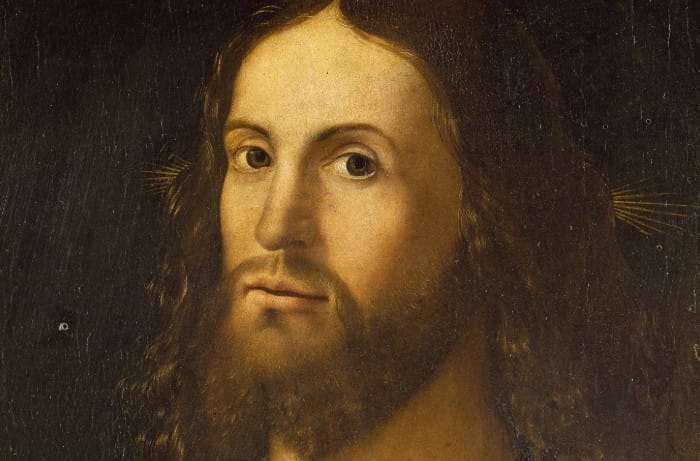
People Cannot Believe What Jesus Christ Actually Looked Like When He Was Alive
Why Do Historical Painters Portray Him Like This?
But how did this even happen? Why would the painters draw him that way if it was not really what he looked like? In the past, the painters of the art pieces in question would do their research before making works about different gods. When Jesus Christ rose in popularity, the painter created the image of the Savior using a different approach. They only relied on their ideas instead of doing their homework!
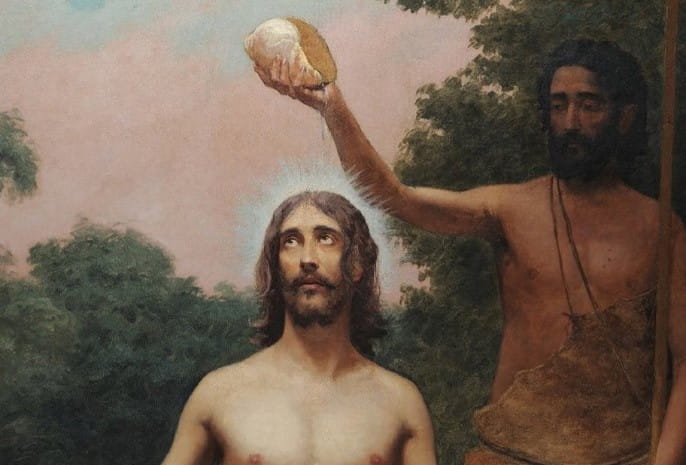
Why Do Historical Painters Portray Him Like This
Out Of This World Accessories
With the arrival of certain tools and technology, historical experts have since found out that these images are not factual. One of the things that they noticed was the accessories that he wore. The Messiah was drawn wearing items that were not in fashion during that period of time. You have probably seen photos showing the Messiah on a fancy royal chair or with a halo over his head. Needless to say, these things just do not make a lick of sense. After doing more research on Jesus Christ, Joan Taylor reached the conclusion that he was an ordinary man who lived a simple life.

Out Of This World Accessories
What Is Written In The Bible?
There are religious folks who would refer to the writings in the Bible. In fact, some of them even use the book as proof of what they are fighting for. We are referring to the appearance of Jesus Christ and his contemporaries from that time period. There are plenty of clues scattered in the book that should give us all an idea. If you ever read the book, you will see that he was described to be an average man who did not stand out from the crowd. He was just like any other man during that era.

What Is Written In The Bible?
Unclear Explanations
There are also a number of vague explanations that would explain why Jesus Christ was made to look like that in so many works of art. In the past, artists did not shy away from using poetic license when working on his portrait. On top of that, we also need to consider the art style that they used. Many artists back then wanted to infuse symbolic meaning to their portraits as well.
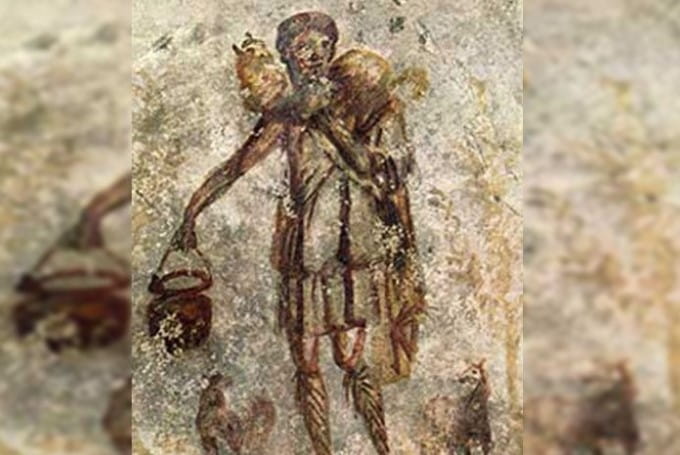
Unclear Explanations
The Good Shepherd
Just look at the paintings of the Messiah in the grassland with many sheep around him. Allegorical artists did this so that they can portray Jesus Christ as “the good shepherd.” This was meant to symbolize that He was the shepherd of the people. The job was supposed to signify that he was a suitable leader who everyone should follow. In reality, however, these paintings were created during the early Roman age. These works of art were often found in Rome, which was located far from His actual homeland.
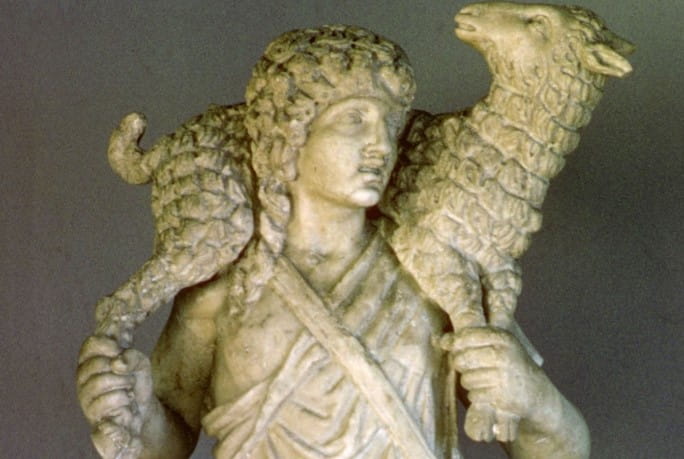
The Good Shepherd
The Picture Is In The Stone
It was during the Middle Ages that the idea of him as a Caucasian man with facial hair became more accepted. However, we think that the most common depiction of Jesus Christ is still as a good shepherd. Other features frequently used by artists would be white or cream robes, long hair, and a beard. If you check out the pieces from that period, there is no way you would miss this.
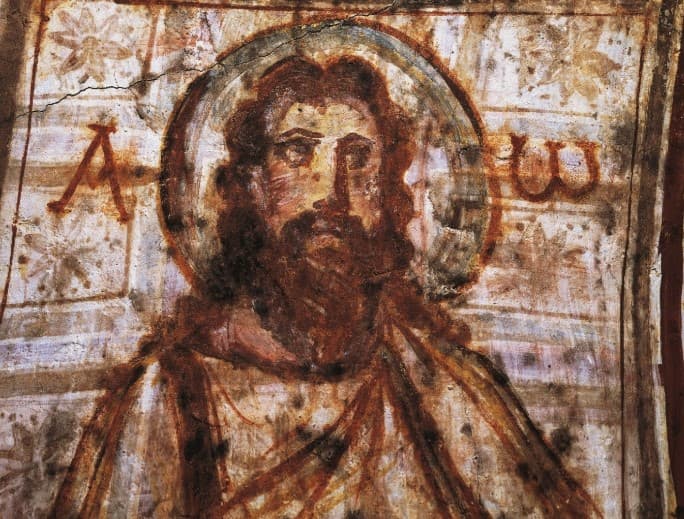
The Picture Is In The Stone
Connecting Images
The best way to figure out what the Messiah looked like was by reading the bible. A lot of historical painters failed to find helpful details in the holy book, however. This was why these painters worked on the image of Jesus Christ based on their own model. However, they also relied on the works of older artists when they came up with their own version.
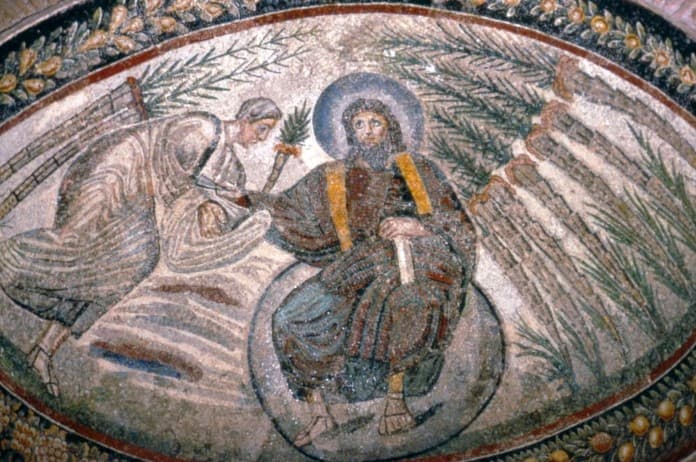
Connecting Images
An Improved Image And Feature
Artists were able to make a new version of the Savior. They used features from the older works, which explains why they are different but still similar. Back then, the artists wanted to create an ideal image of the Messiah. When they worked on their projects, they often based the appearance of Jesus Christ on earlier works of art of Him. This explains why this depiction has become so prevalent.
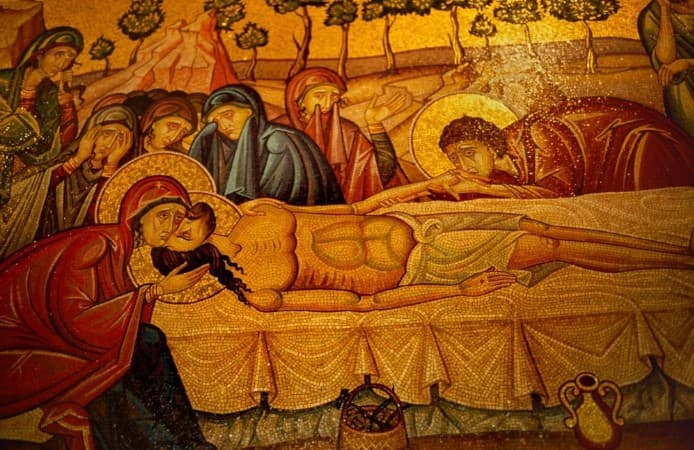
An Improved Image And Feature
Original Work Of Art
Here is an example of what we have been talking about. Zeus from the Greek pantheon has always been shown as a long-haired god with a beard. Doesn’t that remind you of someone else? As a matter of fact, Zeus was often drawn in a white robe as well! Come to think of it, this is actually quite obvious when these similarities have been pointed out to you. The artists had to find the balance between adding original features and making the images look similar to the older ones.
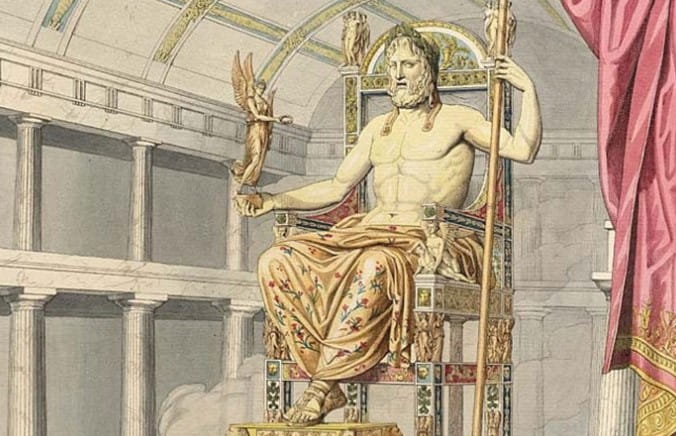
Original Work Of Art
